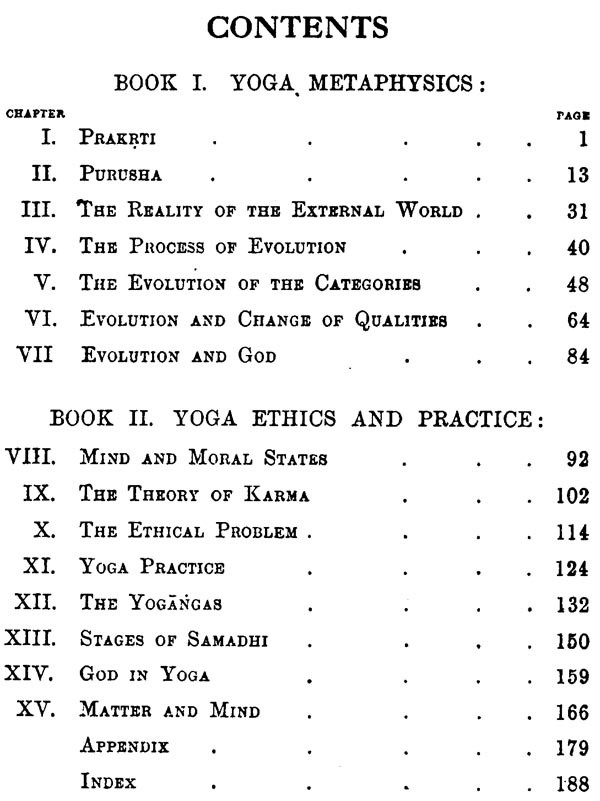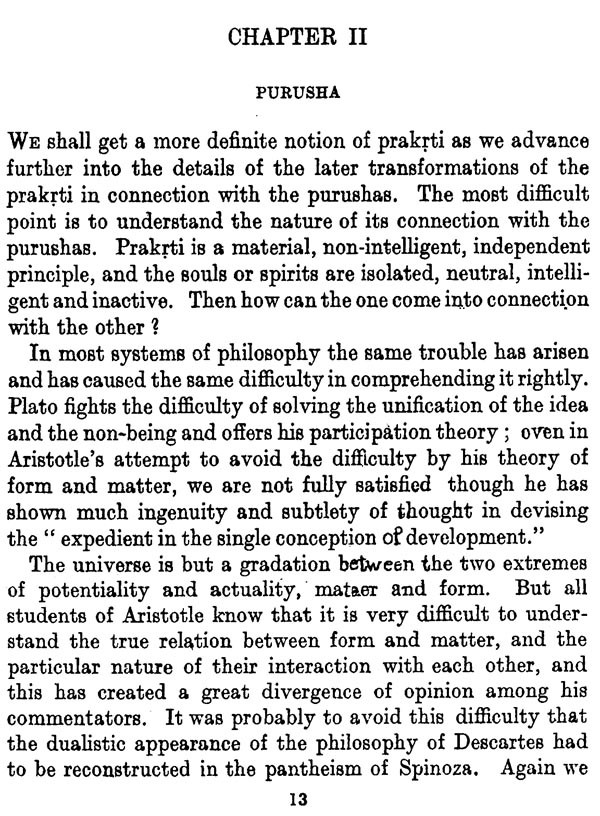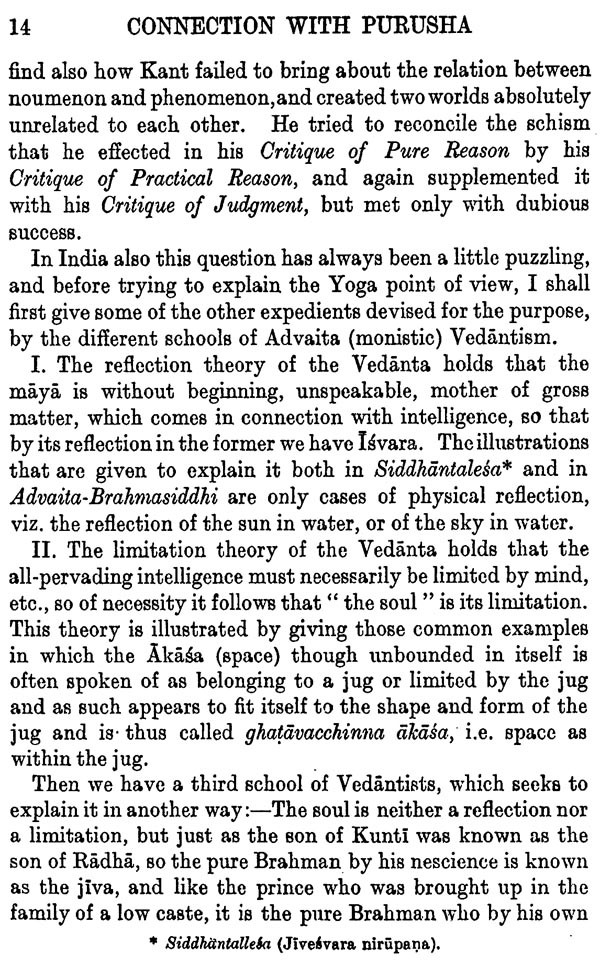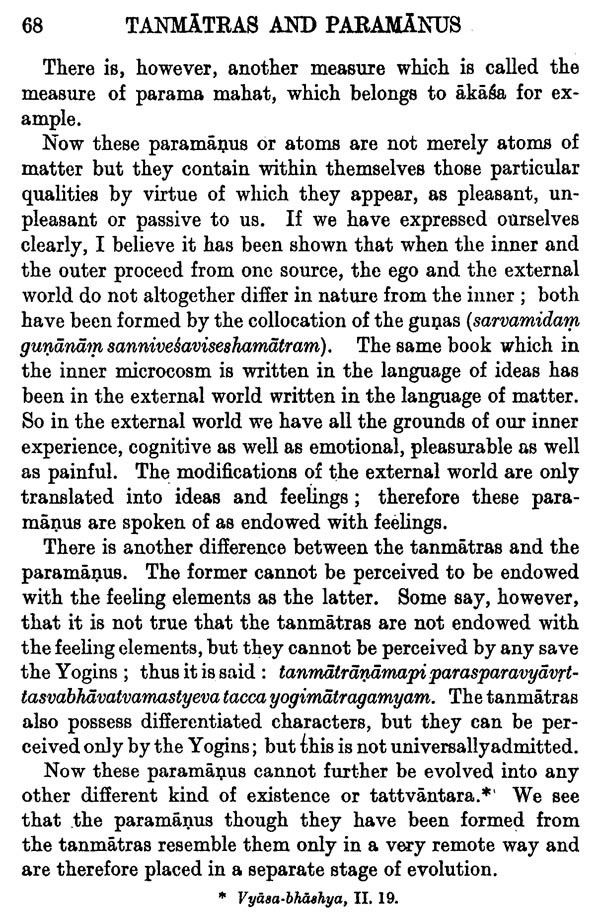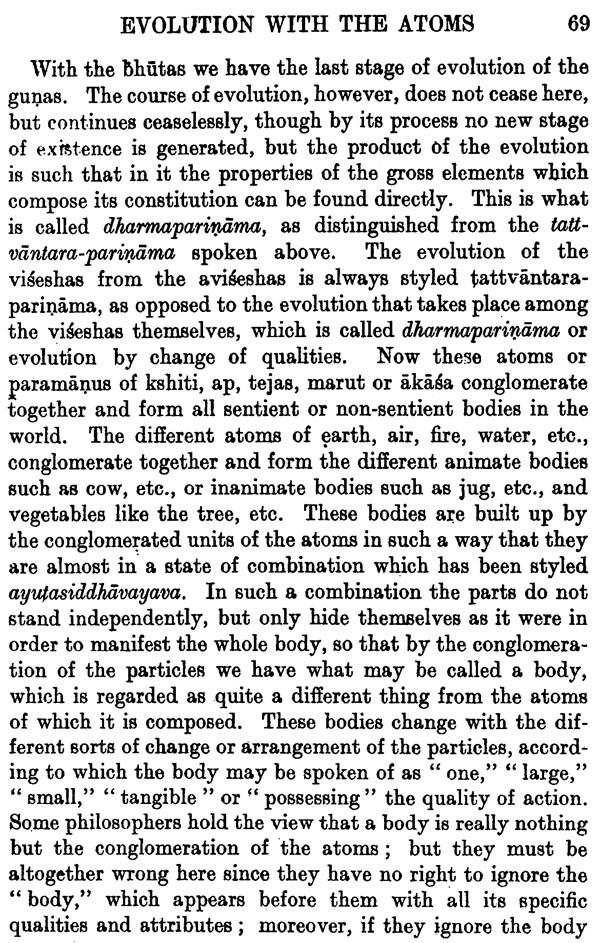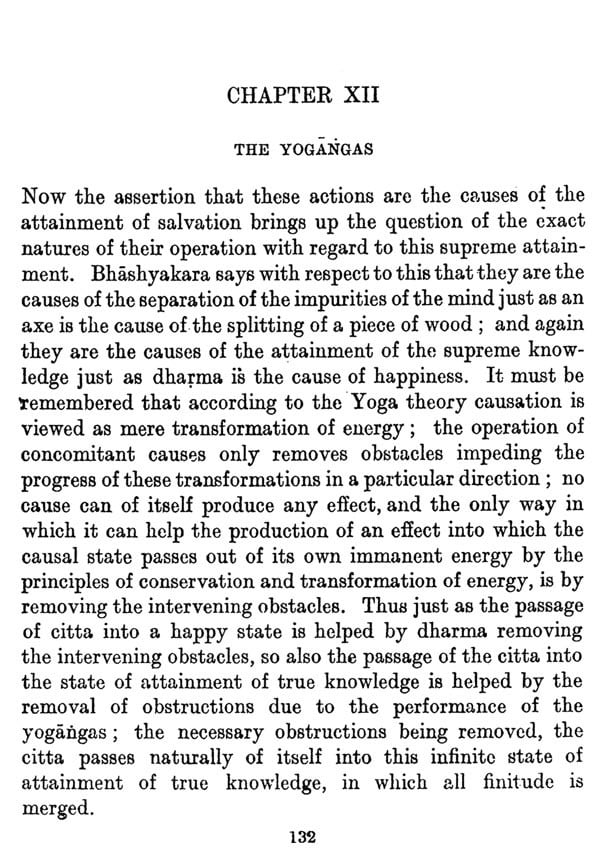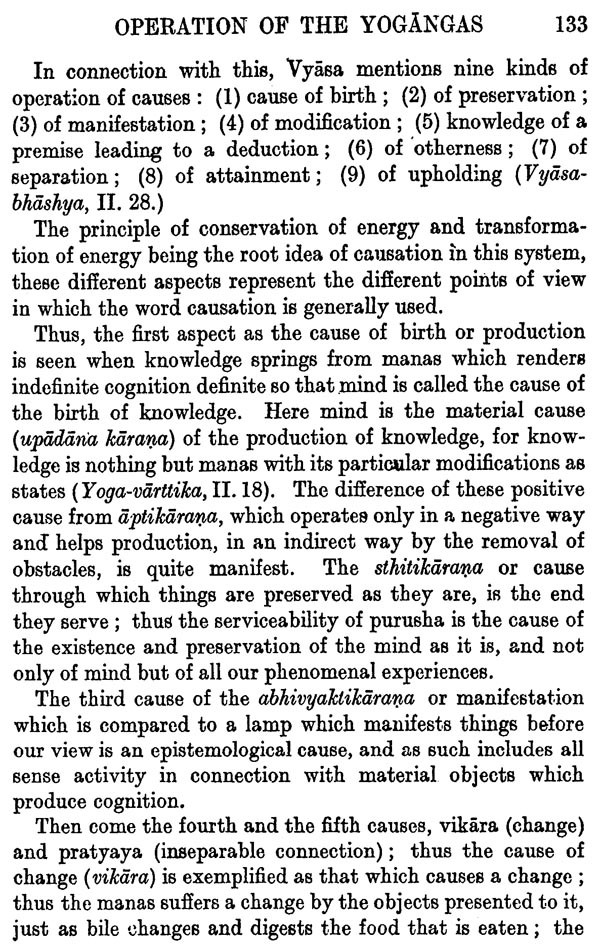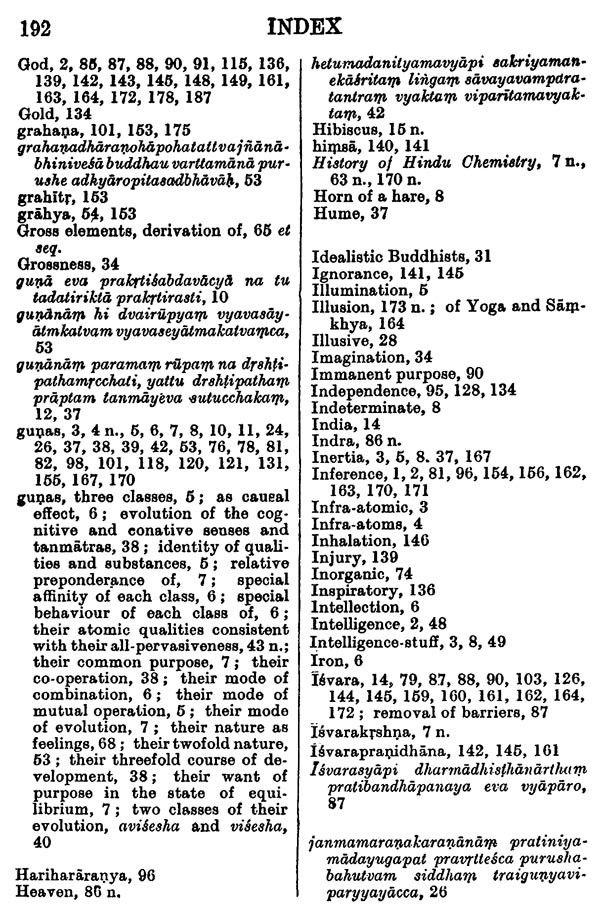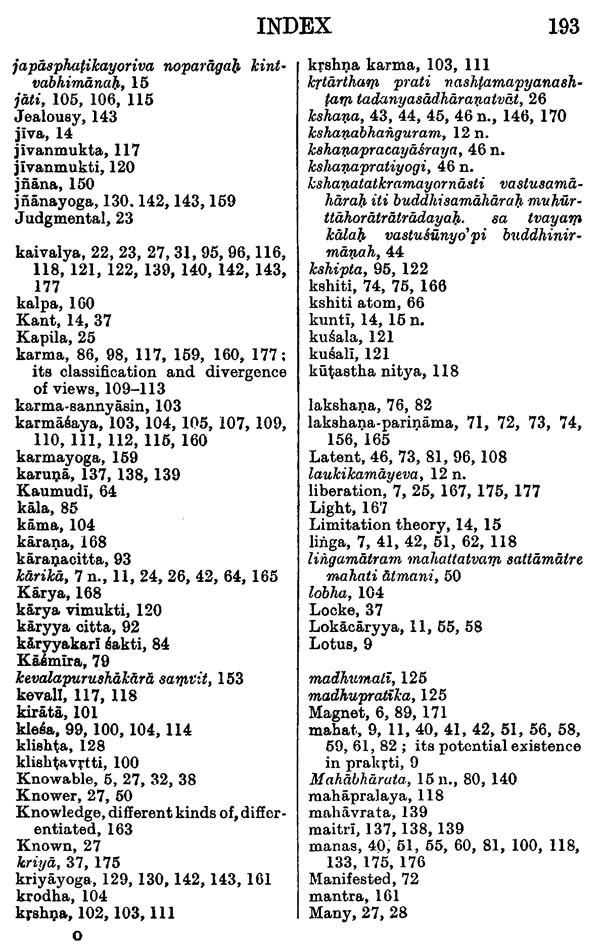
Yoga as Philosophy and Religion
Book Specification
| Item Code: | IDJ755 |
| Author: | Surendranath Dasgupta |
| Publisher: | MOTILAL BANARSIDASS PUBLISHERS PVT. LTD. |
| Language: | English |
| Edition: | 2007 |
| ISBN: | 9788120802186 |
| Pages: | 210 |
| Cover: | Paperback |
| Other Details | 8.50 X 5.50 Inches |
| Weight | 244 gm |
Book Description
Yoga is the steadiness of the mind, with the annihilation of the mental states, into a particular type of graduated state leading to Self-realization. The earliest exponent of this system called Rajayoga, the highest of all yogas as distinguished from Hathayoga and Mantrayoga was Patanjali who wrote Aphorisms on Yoga in 150 B.C.
The present treatise relates to the system of Rajayoga as enunciated by Patanjali and explained by his commentators Vyasa, Vacaspati, Vijnanabhiksu and others. It deals with the foundation of the yoga practices - their philosophical, psychological, cosmological, ethical and religious doctrines. It compares the essential features of the yoga system with other systems of philosophical thought and establishes, in particular, its affinity to the system of Samkhya.
The work consists of fifteen chapters divided into two parts bound in one volume. Part I (Chapters I-VII) deals with Yoga Metaphysics, delineating mainly the characteristics and functions of Prakrti and Purusa the reality of the external world and the process of Evolution. Part II (Chapters VIII-XV) expounds Yoga Ethics and Practice with emphasis on Yoga method, stages of samadhi and kindred topics.
This study is documented with a preface giving an outline of the topic, an appendix on Sphota-the relation of words with their ideas and things, and a general index.
About the Author:
SURENDRANATH DASGUPTA (1885-1952) occupied a unique position in the constellation of contemporary Indian philosophers. He annexed highest academic honours from the universities of Cambridge, Rome and Calcutta. He was lecturer in the University of Cambridge, taught at colleges in Rajshahi and Chittagong (Bangladesh), and became Professor of Philosophy in the Presidency College of Calcutta. He also occupied the Professorial Chair in the University of Calcutta, and became Principal of the Sanskrit College. He represented India in International Congress of Religions in 1936.
Dr. Dasgupta was a prolific writer of books, tracts, reviews, etc. both in Bengali and English. His monumental work is A History of Indian Philosophy in five volumes, published by Motilal Banarsidass Publishers Private Limited, which has already become a classic.
Preface:
THIS little volume is an attempt at a brief exposition of the philosophical and religious doctrines found in Patanjali's Yoga-sutra as explained by its successive commentaries of Vyasa, Vacaspati, Vijnana Bhikshu, and others. The exact date of Patanjali cannot be definitely ascertained, but if his identity with the other Patanjali, the author of the Great Commentary (Mahabhashya) on Panini's grammar, could be conclusively established, there would be some evidence in our hands that he lived in 150 B.C. I have already discussed this subject in the first volume of my A History of Indian Philosophy, where the conclusion to which I arrived was that, while there was some evidence in favour of their identity, there was nothing which could be considered as being conclusively against it. The term Yoga, according to Patanjali's definition, means the final annihilation (nirodha) of all the mental states (cittavrtti) involving the preparatory stages in which the mind has to be habituated to being steadied into particular types of graduated mental states. This was actually practiced in India for a long time before Patanjali lived ; and it is very probable that certain philosophical, psychological, and practical doctrines associated with it were also current long before Patanjali. Patanjali's work is, however, the earliest systematic compilation on the subject that is known to us. It is impossible, at this distance of time, to determine the extent to which Patanjali may claim originality. Had it not been for the labours of the later commentators, much of what is found in Patanjali's aphorisms would have remained extremely obscure and doubtful, at least to all those who were not associated with such ascetics as practiced them, and who derived the theoretical and practical knowledge of the subject form their preceptors in an upward succession of generations leading up to the age of Patanjali, or even before him. It is well to bear in mind that Yoga is even now practiced in India, and the continuity of traditional instruction handed down from teacher to pupil is not yet completely broken.
If anyone wishes methodically to pursue a course which may lead him ultimately to the goal aimed at by Yoga, he must devote his entire life to it under the strict practical guidance of an advanced teacher. The present work can in no sense be considered as a practical guide for such purposes. But it is also erroneous to think-as many uninformed people do-that the only interest of Yoga lies in its practical side. The philosophical, psychological, cosmological, ethical, and religious doctrines, as well as its doctrines regarding matter and change, are extremely interesting in themselves, and have a definitely assured place in the history of the progress of human thought ; and, for a right understanding of the essential features of the higher thoughts of India, as well as of the practical side of Yoga, their knowledge is indispensable.
The Yoga doctrines taught by Patanjali are regarded as the highest of all Yogas (Rajayoga), as distinguished from other types of Yoga practices, such as Hathayoga or Mantrayoga. Of these Hathayoga consists largely of a system of bodily exercises for warding off diseases, and making the body fit for calmly bearing all sorts of physical privations and physical strains. Mantrayoga is a course of meditation on certain mystical syllables which leads to the audition of certain mystical sounds. This book does not deal with any of these mystical practices nor does it lay any stress on the performance of any of those miracles described by Patanjali. The scope of this work is limited to a brief exposition of the intellectual foundation-or the theoretical side-of the Yoga practices, consisting of the philosophical, psychological, cosmological, ethical, religious, and other doctrines which underlie these practices. The affinity of the system of Samkhya thought, generally ascribed to a mythical sage, Kapila, to that of Yoga of Patanjali is so great on most important points of theoretical interest that they may both be regarded as two different modifications of one common system of ideas. I have, therefore, often taken the liberty of explaining Yoga ideas by a reference to kindred ideas in Samkhya. But the doctrines of Yoga could very well have been compared or contrasted with great profit with the doctrines of other systems of Indian thought. This has purposely been omitted here as it has already been done by me in my Yoga Philosophy in relation to other Systems of Indian Thought, the publication of which has for long been unavoidably delayed. All that may be expected from the present volume is that it will convey to the reader the essential features of the Yoga system of thought. How far this expectation will be realized from this book it will be for my readers to judge. It is hoped that the chapter on "Kapila and Patanjala School of Samkhya" in my A History of Indian Philosophy (Vol. I. Cambridge University Press, 1922) will also prove helpful for the purpose.
I am deeply indebted to my friend Mr. Douglas Ainslie for the numerous corrections and suggestions regarding the English style that he was pleased to make throughout the body of the manuscript and the very warm encouragement that he gave me for the publication of this work. In this connection I also bet to offer my best thanks for the valuable suggestions which I received from the reviser of the press. Had it not been for these, the imperfections of the book would have been still greater. The quaintness and inelegance of some of my expressions would, however, be explained if it were borne in mind that here, as well as in my A History of Indian Philosophy, I have tried to resist the temptation of making the English happy at the risk of sacrificing the approach to exactness of the philosophical sense ; and many ideas of Indian philosophy are such that an exact English rendering of them often becomes hopelessly difficult.
I am grateful to my friend and colleague, Mr. D. K. Sen, M.A., for the kind assistance that he rendered in helping me to prepare the index.
Last of all, I must express my deep sense of gratefulness to Sir Ashutosh Mookerjee, Kt., C.S.I., etc. etc., and the University of Calcutta, for kindly permitting me to utilize my A Study of Patanjali, which is a Calcutta University publication, for the present work.
**Contents and Sample Pages**
